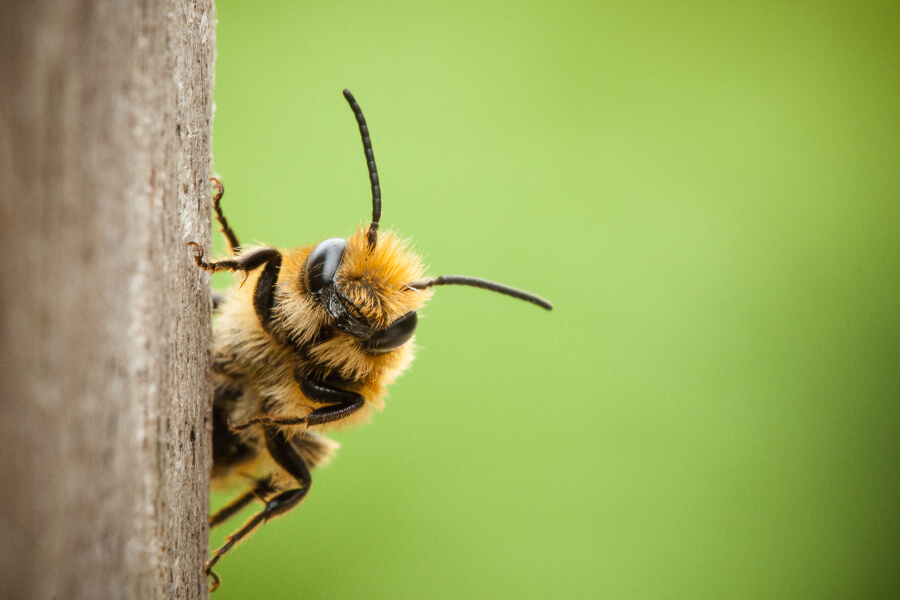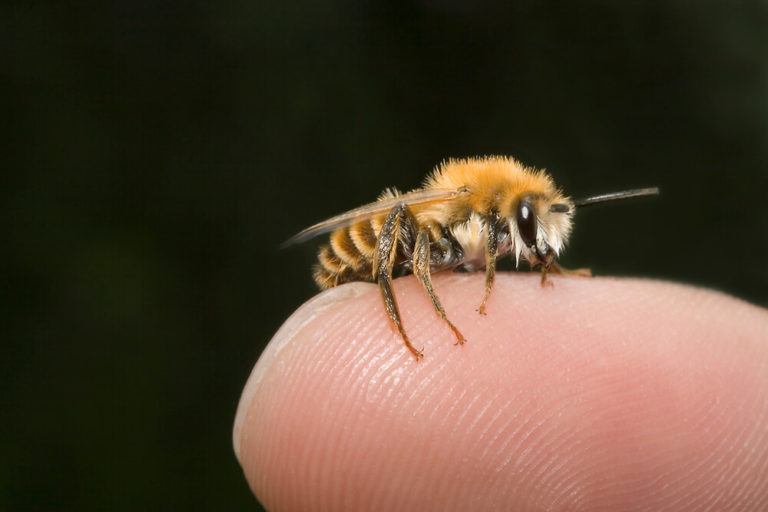Do Some Native Bees Sting? Understanding the Buzz About Stinging Bees
Do Some Native Bees Sting? Understanding the Buzz About Stinging Bees

Native bees are a vital part of our ecosystem, playing a crucial role in pollinating our crops and wildflowers. They are also fascinating creatures, with diverse appearances, behaviors, and nesting habits. But one question that often arises is: do some native bees sting?
The answer, as with many things in nature, is a nuanced one. While some native bees are equipped with stingers, the vast majority are not aggressive and only sting as a last resort for self-defense.
Related Articles: Do Some Native Bees Sting? Understanding the Buzz About Stinging Bees
- A Taste Of The Outback: Exploring The Native Stone Fruits Of Australia
- The Dreaming: A Journey Through The Heart Of Australian Aboriginal Culture
- The Wurundjeri People: Guardians Of Melbourne’s Land
- A Journey Through Flavour: Exploring The Rich Tapestry Of Australian Aboriginal Cuisine
- Uncovering The Rich Tapestry Of Aboriginal Tribes In Victoria: A Journey Through Culture, History, And Resilience
This article will delve into the world of native bees, exploring the different types of bees, their stinging behavior, and how to interact with them safely.
Understanding the Stinging Mechanism
Bees, like wasps and ants, belong to the order Hymenoptera, which are known for their stinging capabilities. The stinger is actually a modified ovipositor, an organ used to lay eggs. However, in many species, this organ has evolved into a defensive weapon.
The Anatomy of a Sting
A bee sting is a complex structure, consisting of:
- Barbs: The stinger is equipped with barbs, which are small, backward-pointing hooks. These barbs help to anchor the stinger in the victim’s skin, allowing the bee to inject venom.
- Venom Sac: This sac stores the venom, a toxic substance that causes pain, inflammation, and other reactions in the victim.
- Muscles: Muscles attached to the stinger help to pump venom into the wound.

The Difference Between Native Bees and Honeybees
While the term "bee" is often used to refer to all stinging insects, it’s important to distinguish between honeybees and native bees.
Honeybees: These are social insects that live in large colonies, with a queen bee, worker bees, and drones. Honeybees are known for their aggressive nature and their tendency to sting repeatedly. Their stinger has barbs, which detach from the bee’s body after stinging, causing the bee to die.

Native Bees: In contrast, most native bees are solitary or semi-social. They live independently, with females responsible for building their own nests and raising their offspring. Many native bees are gentle and non-aggressive, and they rarely sting. Even if they do, their stingers are typically smooth and do not detach, allowing them to sting multiple times.
Types of Native Bees and Their Stinging Behavior
Here’s a breakdown of some common native bees and their stinging habits:
1. Bumblebees: These fuzzy, social bees are known for their gentle nature. They are important pollinators and are often seen buzzing around flowers. Bumblebees have stingers but are not aggressive and will only sting if they feel threatened. Their stingers are barbed, but they can sting multiple times.
2. Carpenter Bees: These large, solitary bees are known for their distinctive buzzing sound. They get their name from their habit of nesting in wood. Carpenter bees have stingers but are generally not aggressive. They will only sting if they feel threatened or are handled roughly. Their stingers are barbed, but they can sting multiple times.

3. Mason Bees: These small, solitary bees are excellent pollinators and are often used in gardens and orchards. They get their name from their habit of using mud to build their nests. Mason bees have stingers but are very gentle and rarely sting. Their stingers are smooth and do not detach, allowing them to sting multiple times.
4. Leaf-cutter Bees: These solitary bees are known for their habit of cutting circular pieces of leaves to line their nests. They are important pollinators and are often seen in gardens and orchards. Leaf-cutter bees have stingers but are very gentle and rarely sting. Their stingers are smooth and do not detach, allowing them to sting multiple times.
5. Sweat Bees: These small, solitary bees are often seen around humans, attracted to sweat. They get their name from their habit of collecting sweat to drink. Sweat bees have stingers but are not aggressive and rarely sting. Their stingers are smooth and do not detach, allowing them to sting multiple times.
6. Mining Bees: These solitary bees are known for their habit of digging burrows in the ground to build their nests. They are important pollinators and are often seen in gardens and meadows. Mining bees have stingers but are not aggressive and rarely sting. Their stingers are smooth and do not detach, allowing them to sting multiple times.
7. Orchid Bees: These colorful, solitary bees are known for their association with orchids. They are important pollinators and are often seen in tropical forests. Orchid bees have stingers but are not aggressive and rarely sting. Their stingers are smooth and do not detach, allowing them to sting multiple times.
How to Interact with Native Bees Safely
While most native bees are gentle and non-aggressive, it’s important to be respectful of their space and avoid disturbing them. Here are some tips for safe interaction:
- Observe from a distance: Don’t approach a bee nest or disturb a bee that is foraging.
- Avoid swatting or making sudden movements: This can make the bee feel threatened and more likely to sting.
- Wear light-colored clothing: Bees are attracted to dark colors, so wearing light-colored clothing can help reduce the risk of being stung.
- Stay calm and avoid panic: If a bee lands on you, stay calm and gently brush it away.
- Be aware of your surroundings: Pay attention to your surroundings and be aware of bee activity.
- Keep food and drinks covered: Bees are attracted to sugary drinks and food, so keep them covered to avoid attracting them.
- Avoid using scented products: Perfumes, colognes, and hairsprays can attract bees, so avoid using them when outdoors.
- Learn to identify native bees: If you are unsure about a bee, it’s best to avoid it.
What to Do If You Get Stung
If you get stung by a bee, it’s important to remove the stinger as quickly as possible. Do this by scraping the stinger out with a fingernail or a credit card. Avoid squeezing the stinger, as this can release more venom.
After removing the stinger, wash the area with soap and water. Apply a cold compress to reduce swelling and pain. If you experience any severe symptoms, such as difficulty breathing, dizziness, or nausea, seek medical attention immediately.
The Importance of Native Bees
Native bees are essential for our ecosystem, playing a crucial role in pollinating our crops and wildflowers. They contribute to the production of fruits, vegetables, and nuts, which are vital for human food security. They also help to maintain biodiversity by supporting a wide range of plants and animals.
Protecting Native Bees
Protecting native bees is crucial for maintaining a healthy ecosystem. Here are some things you can do to help:
- Plant native flowers: Native bees are attracted to native plants, so planting a variety of wildflowers and shrubs in your garden can provide them with food and habitat.
- Provide nesting sites: Many native bees are solitary and need suitable nesting sites. You can create nesting sites by drilling holes in wooden blocks or providing hollow stems.
- Avoid using pesticides: Pesticides can harm native bees, so avoid using them in your garden and support organic farming practices.
- Educate others: Spread the word about the importance of native bees and how to protect them.
FAQ About Native Bees and Stinging
Q: What are the most common native bees that sting?
A: While many native bees have stingers, they are generally not aggressive and rarely sting. The most common native bees that might sting include bumblebees, carpenter bees, and sweat bees.
Q: Do all native bees sting?
A: No, not all native bees sting. Some species, like mason bees and leaf-cutter bees, have stingers but are very gentle and rarely sting.
Q: How can I tell if a bee is going to sting?
A: It’s difficult to tell if a bee is going to sting, but you can look for signs of aggression, such as buzzing loudly, flying in a threatening manner, or landing on you repeatedly.
Q: What should I do if I see a bee nest?
A: If you see a bee nest, it’s best to leave it alone and avoid disturbing it. If you are concerned about a nest near your home or business, contact a pest control professional for assistance.
Q: Are native bees dangerous?
A: Most native bees are not dangerous and are actually very beneficial to the environment. However, it’s important to be respectful of their space and avoid disturbing them.
Q: What is the best way to protect myself from bee stings?
A: The best way to protect yourself from bee stings is to avoid disturbing bees, wear light-colored clothing, and avoid using scented products when outdoors.
Conclusion
Native bees are fascinating and important creatures that play a vital role in our ecosystem. While some species have stingers, they are generally not aggressive and only sting as a last resort for self-defense. By understanding their behavior and taking precautions, we can coexist peacefully with these beneficial insects and contribute to their conservation.

Closure
Thus, we hope this article has provided valuable insights into Do Some Native Bees Sting? Understanding the Buzz About Stinging Bees. We appreciate your attention to our article. See you in our next article!


